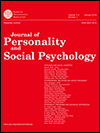Incongruent gestures slow the processing of facial expressions in university students with social anxiety
In recent years, an increasing number of studies have examined the mechanisms underlying nonverbal emotional information processing in people with high social anxiety (HSA). However, most of these studies have focused on the processing of facial expressions, and there has been scarce research on gesture or even face-gesture combined processing in HSA individuals. The present study explored the processing characteristics and mechanism of the interaction between gestures and facial expressions in people with HSA and low social anxiety (LSA). The present study recruited university students as participants and used the Liebowitz Social Anxiety Scale scores to distinguish the HSA and LSA groups. We used a 2 (group: HSA and LSA) × 2 (emotion valence: positive, negative) × 2 (task: face, gesture) multifactor mixed design, and videos of a single face or gesture and combined face-gesture cues were used as stimuli. We found that (1) there is a distinction in the processing of faces and gestures, with individuals recognizing gestures faster than faces; (2) there is an attentional enhancement in the processing of gestures, particularly for negative gestures; and (3) when the emotional valence of faces and gestures align, it facilitates the recognition of both. However, incongruent gestures have a stronger impact on the processing of facial expressions compared to facial expressions themselves, suggesting that the processing of facial emotions is more influenced by environmental cues provided by gestures. These findings indicated that gestures played an important role in emotional processing, and facial emotional processing was more dependent on the environmental cues derived from gestures, which helps to clarify the reasons for biases in the interpretation of emotional information in people with HSA.



